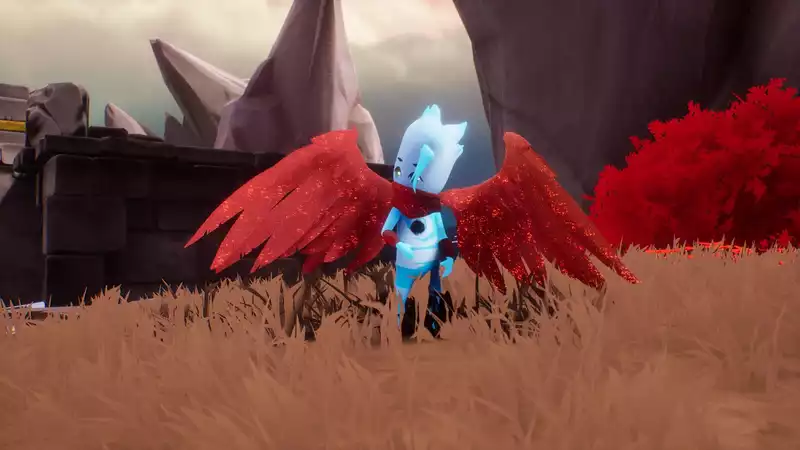Many developers have been influenced by other games, but none have made the homage as obvious as Uprising Studios. While "Scarf" evokes a similar mood, it is, for better or worse, entirely its own thing. More than a mere magic thread, the garment is a sentient entity and key to the game's puzzle-platform gameplay.
Scarf begins with the birth of an unnamed character: a small blue human with funky hair, cartoon eyes, no mouth, and a black hole in the middle of his chest. Scarf appears before them in the (very rough) shape of a Chinese dragon, calls them heroes, and says that he was chosen to cure Scarf's mother as a being of light. None of this introduction makes sense, but it is the last time the scarf attempts any kind of explanation, and instead tells the story almost wordlessly.
Ultimately, without any clear direction, you are left to explore the various worlds connected by a central hub. In each world, you first reach the light, then collect light until you reach the end of the level and are returned to the hub.
Scarf is a simple platformer that gets you from A to B. The scarf acts like a Swiss Army knife of platforming tools. At random points in the level, collecting a particularly large light grants a new ability, transforming the scarf into a pair of wings that allow the player to double jump or glide over large ditches. They may also move platforms, jump over moving platforms, and press buttons.
While a wide variety of actions and tools usually help to make a platformer diverse and interesting, "Scarf" seems to be a random combination of elements in their most basic form. If there is a platform to move, you simply drag it in that direction. If there is a lever that you cannot control, you jump over three platforms on the other side of the dungeon to reach it.
The game lacks any sense of challenge, and while it claims to be relaxing, it is actually just boring; one could say that Scarf is trying to appeal to players of all ages, but creating something accessible to a wide audience and providing a relaxing experience is doesn't have to be so simple as to be unengaging. Unfortunately, "Scarf" does just that. Furthermore, the character animations are so languid and constantly sounding like they are straining that nothing in "Scarf" is as much fun as its magical shawl premise would suggest.
Scarf's excellent soundtrack is one element that succeeds in creating a relaxed atmosphere and deserves special mention. On the other hand, the visual presentation of the game is often beautiful, with long moving shots introducing each new landscape. Nevertheless, the visual beauty is neither as intense nor as refined as in Journey. Unfortunately, too many moving elements slow down the frame rate and, upon closer inspection, the textures are quite muddy.
Story-wise, it will take a careful observer roughly five minutes to realize that Scarf is not intended to be a place of serene repose; "Scarf" is as modest with these narrative clues as it is with puzzle solutions, begging you to prepare for the big surprise. And they come with confusing nonverbal And it vacillates between confusing nonverbal passages and painfully obvious narration by brilliantly miscast voice actors.
The game invites you on a "journey" that generally promises nothing more than a good time, but wastes time by confining its "good" ending to a pointless search for collectibles. This makes the effort of a three- to five-hour long "scarf" casually utterly pointless. Although it mimics popular elements of other games, its implementation leaves much to be desired; "Scarf" is not a work of art that is many times better than anything I've seen elsewhere.
"Scarf" is a game that is eager to use many popular elements in both gameplay and scenario, but its implementation suggests a lack of technology and resources to make them actually engaging. Looking beyond the tried and true to what actually exists, "Scarf" is not a work of art that is many times better than anything we have seen elsewhere.
.

Comments